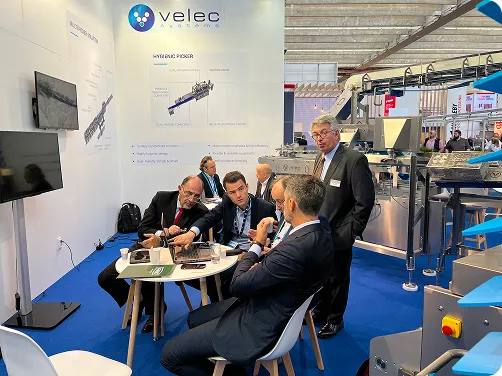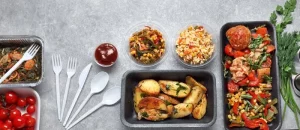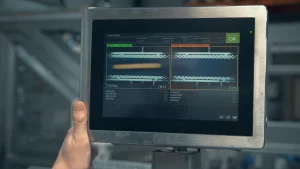With the rising popularity of ready-to-eat (RTE) meals, consumer demands in this area are also becoming more exacting. Gone are the days of simple boil-and-dump packaging. Consumers now want ready meals that look appetizing on the supermarket shelf. As a producer of ready meals, you now need to create products that have all the appeal of freshly plated restaurant meals, as well as the nutritional value of lovingly prepared home-cooked meals – all while operating at manageable costs and keeping standards and quantities consistent. How can you meet these high demands without slowing down the production of ready food or raising costs? It requires specialized equipment, such as Multi-Fill’s semi-automated and automated volumetric fillers .
Adaptable food filling solutions
Multi-Fill’s specially designed solutions for the food filling industry include three unique volumetric fillers. Each of them is made to suit the specific demands of the ready made food industry.
- MPFMP-60: A semi-automatic filler pocket filler for cooked rice and pasta, cut vegetables and fruit, cereal, ready-to-eat salads, and shredded meats. This filler is ideally suited for lower speed production lines, research and development labs, and pilot plant operations. It is rated at speeds up to 60 containers per minute, depending upon the product, volume to fill, container, line configuration, and operator
- MPFSH-075: An automatic pocket filler to dispense clean portions of products that are generally considered difficult to dispense, such as cooked rice and pasta, shrimp and surimi rated at up to 75 cpm.
- MPFSC-120: Dispenses clean, accurate portions of a wide variety of difficult-to-fill products, while operating at very high speeds up to 120 cpm.
Processed quinoa and healthy eating – meeting your customer’s expectations
One of the most pressing demands placed on machinery designers as a result of the impact of ready-made meals on the food industry, is the need for machines that can dispense sticky, difficult to fill foods, such as rice and pasta. Cooked quinoa is a good example of these foods, having become increasingly popular over the past couple of decades. Demand for this ancient grain started to grow around the year 2000 and it has increased in popularity ever since. As a carbohydrate that is also low-GI and rich in protein, it is an excellent substitute for starches such as rice and pasta. Filling cooked quinoa is an operation that requires care and precision to prevent clumping, disturbing the flow of distribution and ending up with a high level of product variability. With the right equipment, such as Multi-Fill’s specialized filling machines, quinoa can be simple as well as delicious.
Multi-Fill’s unique volumetric fillers are all designed to meet the specific requirements of the ready meal industry, contact us today!



